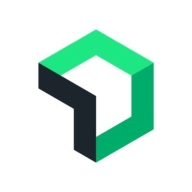

HPE OneView and New Relic operate in IT management and application performance monitoring, respectively. HPE OneView may have the upper hand in automation and integrated platform management, while New Relic excels in detailed application performance insights.
Features: HPE OneView offers an automation-focused integrated platform that manages diverse environments efficiently. Its single-pane-of-glass view supports time-saving features for various HPE systems and simplifies server health monitoring through centralized management. New Relic provides robust application performance monitoring with detailed server and application insights, supports error tracking and real-time metrics, and allows custom dashboards for enhanced operational efficiency.
Room for Improvement: HPE OneView could improve its integration with non-HPE components and enhance speed and alert management. Users also seek better customization and more detailed reporting capabilities. New Relic users express concerns about data privacy and desire improved alerting and integration options. They also want more control and clearer pricing structures.
Ease of Deployment and Customer Service: HPE OneView primarily deploys on-premises with mixed experiences in technical support, ranging from excellent engagement to slow responses. New Relic, mostly used in the public cloud, receives generally positive feedback for responsive support, although some users seek more streamlined assistance. Its SaaS model simplifies deployment.
Pricing and ROI: HPE OneView offers competitive pricing with various licensing models, providing a favorable return on investment through streamlined management. New Relic's pricing is viewed as high, particularly for smaller businesses or large deployments, but its capabilities in advanced monitoring offer significant productivity improvements despite the complex pricing model.
The customer service and support have been responsive.
The technical support for HPE OneView rates as an 8 on a scale from 1 to 10, where 1 is the worst and 10 is the best.
I would give the quality of HPE OneView's technical support an eight out of ten rating, indicating good customer service and support in my opinion.
Issues that could be solved quickly sometimes take longer because they go around in circles.
I have reached out to customer support multiple times for various cases, particularly for customization such as creating dashboards, and my experience has been good.
HPE OneView is highly scalable, especially useful for organizations with large infrastructures.
HPE OneView is a scalable solution since you can integrate any number of servers based on your license.
Scalability is fine as we can add Synergy frames and extend many frames as needed.
The stability of the blades is concerning; we have frequent issues with blades having memory or power issues.
HPE OneView is a stable solution that works efficiently.
It supports unified monitoring effectively but may have areas for enhancement.
The upgrade process is lengthy, requiring careful planning as we cannot match ESXi versions without aligning OneView first, leading to delays.
From the dashboard and reporting perspective, HPE OneView could be improved by having multiple modules rather than just a single customization option.
I believe the prices of HPE OneView should be reduced, as it is quite expensive.
Using real-time data, if there are any malicious patterns or something happening, they can identify those.
AI integration, including predictive analytics, is available for certain features but is not comprehensive.
New Relic can get pricey for larger organizations.
Customers need to pay a substantial amount for the licenses, especially when monitoring a large number of servers and storages.
Our main concern is managing expenses related to the VMware licensing model which affects blade usage.
I can monitor everything in one view, which has significantly improved operational efficiency for us.
One of the best features of HPE OneView is that you get a complete architecture with a single click.
This approach makes the upgrade process straightforward and efficient.
Using New Relic speeds up troubleshooting and resolution, giving us a clearer picture of where issues are, thus saving time and effort.
There is something called NRQL, New Relic Query Language, which can be used to query many things and retrieve data.
New Relic has positively impacted my organization by providing faster detection capabilities, allowing us to easily find issues, which is the best advantage.
| Product | Market Share (%) |
|---|---|
| New Relic | 3.9% |
| HPE OneView | 1.4% |
| Other | 94.7% |


| Company Size | Count |
|---|---|
| Small Business | 22 |
| Midsize Enterprise | 15 |
| Large Enterprise | 51 |
| Company Size | Count |
|---|---|
| Small Business | 65 |
| Midsize Enterprise | 50 |
| Large Enterprise | 61 |
HPE OneView is your infrastructure automation engine to simplify operations, increasing the speed of IT delivery for new applications and services. Through software defined intelligence, HPE OneView brings a new level of automation to infrastructure management by taking a template driven approach to provisioning, updating, and integrating compute, storage, and networking infrastructure. Designed with a modern, standard-based API and supported by a large and growing partner ecosystem, HPE OneView also makes it easy to integrate powerful infrastructure automation into existing IT tools and processes. Take command with HPE OneView to deploy infrastructure faster, simplify operations and increase productivity.
HPE OneView innovations provide you the industry’s best infrastructure management experience, simplifying operations for HPE BladeSystem, HPE ProLiant servers, 3PAR storage, HPE Networking and HPE ConvergedSystems.
New Relic offers real-time application monitoring and insight into performance bottlenecks. Its customizable dashboards and APM integration provide efficient operational support, while server performance alerts ensure quick issue detection.
New Relic provides comprehensive monitoring of application performance, tracking bottlenecks across databases and front-end components. Users employ it for server and infrastructure monitoring, as well as analyzing key metrics such as CPU and memory usage. The solution's ability to integrate with tools like PagerDuty enhances incident management capabilities. However, users have expressed a need for improvements in query language simplicity, more detailed historical insights, and better mobile app monitoring support.
What are New Relic's most important features?In industries like e-commerce and financial services, New Relic supports application performance monitoring to enhance user experience and system reliability. Organizations leverage its insights for optimizing performance, particularly in server operations and infrastructure management. Its ability to monitor API failures through synthetic monitoring is crucial for maintaining high service levels.
We monitor all IT Infrastructure Monitoring reviews to prevent fraudulent reviews and keep review quality high. We do not post reviews by company employees or direct competitors. We validate each review for authenticity via cross-reference with LinkedIn, and personal follow-up with the reviewer when necessary.